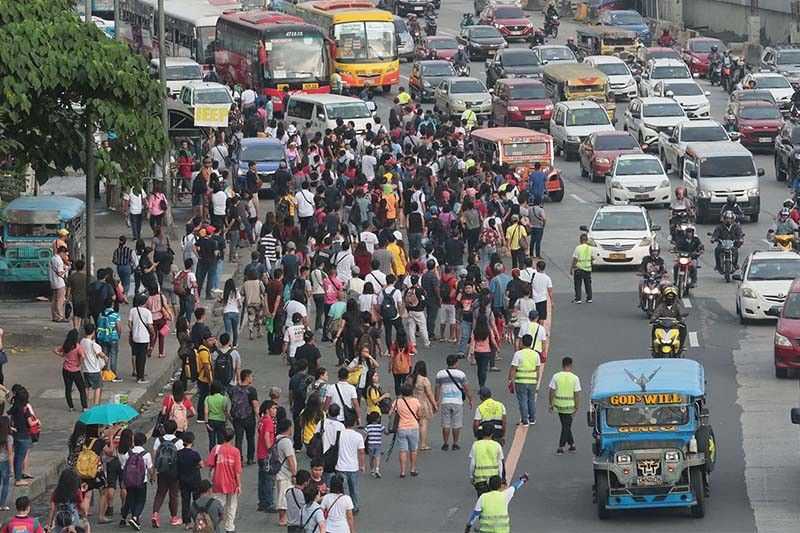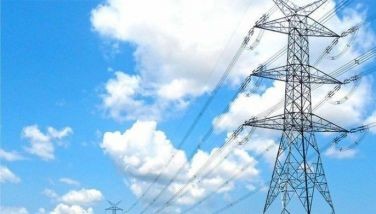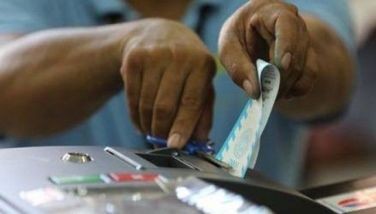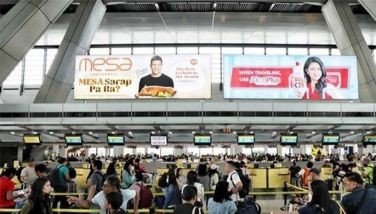Metro Manila traffic is the second worst in the world — report

MANILA, Philippines — Metro Manila's traffic congestion in 2019 was the second worst in the world among 416 cities in 7 countries on 6 continents, just behind, Bogota, Colombia and Mumbai, India a specialist said.
According to the TomTom Traffic Index 2019, Metro Manila's congestion level was listed at 71 percent after the traffic index collected 306,409,293 km of road data in the nation's capital.
Motorists lost 257 hours, or 10 days and 17 hours, driving in rush hours over the year as an extra 29 minutes was spent for every 30 minute trip in the morning, while an evening half-hour trip would eat up an additional 38 minutes to get through.
This was because throughout the year, highways were 73 percent congested on average while non-highways endured 70 percent congestion.
READ: Solutions to Metro Manila traffic 'coming along,' NEDA exec says
On average, the evening rush yielded 128 percent congestion while traffic choke points during the morning rush were only recorded at 95 percent. TomTom identified 6 p.m. to 7 p.m. on Friday as the worst time to be on the road with 143 percent road congestion.
"Travelling after 7 PM on Friday could save you up to 5 hours per year (for a 30 minute commute)," the index said.
For that year, Friday, April 19 was listed as the day with the least traffic, while August 16, also a Friday, was the worst with 107% average congestion.
Mass transportation crisis
Numerous statistics and datasets have long corroborated the lamentable traffic congestion problem plaguing the Metro.
A study by the Boston Consulting Group commissioned by Uber showed that Metro Manila motorists wait in traffic for an average of 66 minutes every day on top of 24 minutes spent looking for parking at their destinations. The study listed Manila as the third worst in Asia, just behind Bangkok and Jakarta.
According to a ranking by traffic navigation app Waze in 2019, Metro Manila is the singular worst place in the world to drive in, as Waza data showed that it took 4.9 minutes to drive a full kilometer in Metro Manila in September 2019, marking a significant increase from April's recorded figure of 3.8 minutes.
READ: Metro Manila worst to drive in, according to Waze ranking
In October 2019, an urban planner also said that Filipinos sit through a cumulative nine years of their working prime sitting in traffic.
"[I]f you have 40 years of economic life with the five to six hours a day [of commuting,] you would have wasted 28,000 to 40,000 hours, that's at least nine to fifteen years taken from your life," urban planner Felino "Jun" Palafox said in an interview on ANC's "Early Edition".
Similarly, the Japan International Cooperation Agency said in a 2018 study that traffic now costs the Philippines P3.5 billion in "lost opportunities" daily.
The amount is expected to triple in number by the year 2030.
This comes in the midst of what transport and worker groups have called a mass transportation crisis.
READ: Mass transport in Philippines is in crisis — BAYAN
In an earlier interview with Philstar.com, University of the Philippines School of Urban and Regional Planning Urban Studies Professor and Consultant Jed Gomez said that the influx of cars in Metro Manila is largely to blame for the bulk of the capital's traffic woes.
"There's just too many of them. The public transportation is not adequate, so people are forced to buy cars, [and] it becomes part of the Filipino dream," he said.
"If you provide a good alternative, people won’t be tempted to buy cars as often."
On January 17, Department of Public Works and Highways Secretary Mark Villar said that P384 billion has been funelled into road infrastructure projects as part of the government's Build, Build, Build program. These, he said, were seen to improve the traffic by the second half of 2020.
"Abangan niyo po. This year, we'll see major improvements in EDSA," Villar said.
- Latest
- Trending































